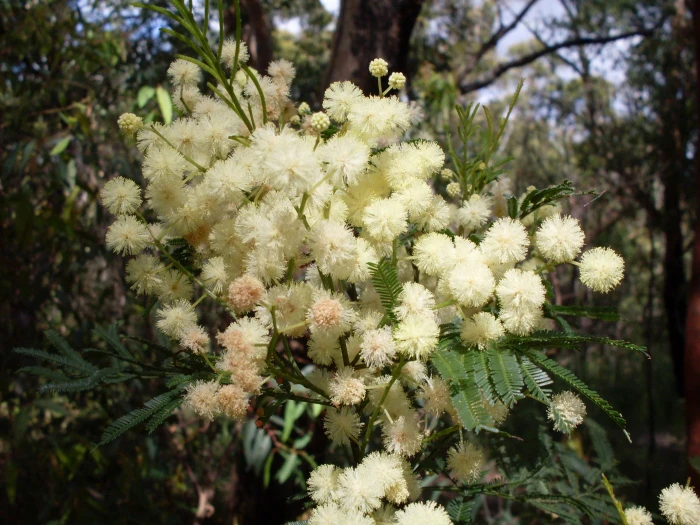Parramatta Wattle
(Acacia parramattensis)
Parramatta Wattle (Acacia parramattensis)
/
/

John Tann
CC BY 2.0
Image By:
John Tann
Recorded By:
Copyright:
CC BY 2.0
Copyright Notice:
Photo by: John Tann | License Type: CC BY 2.0 | License URL: https://creativecommons.org/licenses/by/2.0 | Uploader: Casliber | Publisher: Wikimedia Commons | Title: Acacia_parramattensis_Jannali.jpg | Notes: {{Information |Description= ''[[Acacia spectabilis]]'' (cultivated, labelled) Royal Botanic Gardens, Cranbourne, Victoria, Australia |Source= digital photograph by author |Date= 2008-08-03 |Author= [[:en:User:Melburnian|Melburnian]] |Permission= see below |


















Estimated Native Range
Climate Requirements for Tulsa, Oklahoma
| This Plant | Your Site | Plant Suitability for Your Location | ||
|---|---|---|---|---|
| • Precipitation | 18" - 92" | 41" | Aquatic | Aquatic |
| • High Temp. | 70°F - 93°F | 94°F | Your summers may be too hot for this plant. | Too hot |
| • Low Temp. | 28°F - 65°F | 25°F | Your winter temperatures may be too cold for this plant | Too cold |
This plant should grow very well at your location but requires an aquatic environment.
Summary
Acacia parramattensis, commonly known as Parramatta Wattle, is an evergreen tree native to the open woodlands and forest margins of New South Wales, Australia. It exhibits a moderate growth rate, reaching 6 to 8 meters (20 to 26 feet) in height within five years. The Parramatta Wattle has a bushy habit and produces an abundance of bright yellow, spherical flower heads during the summer months, which are highly attractive to pollinators and beneficial insects.
This species is valued for its hardiness and adaptability to a range of soil types, though it prefers well-drained soils. It is drought-tolerant once established, making it suitable for low-water gardens and xeriscaping. The Parramatta Wattle is often used for shade in gardens, revegetation projects, and as a screen or windbreak due to its dense foliage. It is propagated by seed, which typically requires pre-treatment to break dormancy. While generally low-maintenance, it is susceptible to borer infestations which can damage the wood and compromise the tree’s structural integrity.CC BY-SA 4.0
This species is valued for its hardiness and adaptability to a range of soil types, though it prefers well-drained soils. It is drought-tolerant once established, making it suitable for low-water gardens and xeriscaping. The Parramatta Wattle is often used for shade in gardens, revegetation projects, and as a screen or windbreak due to its dense foliage. It is propagated by seed, which typically requires pre-treatment to break dormancy. While generally low-maintenance, it is susceptible to borer infestations which can damage the wood and compromise the tree’s structural integrity.CC BY-SA 4.0
Plant Description
- Plant Type: Tree
- Height: 9-18 feet
- Width: 6-9 feet
- Growth Rate: Rapid
- Flower Color: Yellow
- Flowering Season: Summer
- Leaf Retention: Evergreen
Growth Requirements
- Sun: Full Sun
- Water: Low
- Drainage: Slow
Common Uses
Bee Garden, Bird Garden, Drought Tolerant, Hedges, Hummingbird Garden, Low Maintenance, Street Planting
Natural Habitat
Open woodlands and forest margins
Other Names
Common Names: South Wales Wattle
Scientific Names: Acacia parramattensis, Acacia sulcipes, Racosperma parramattense, Racosperma parramattensis
GBIF Accepted Name: Acacia parramattensis Tindale